This homemade gluten-free almond flour pasta is a perfect neutral pasta to top with your favorite sauce. Tender eggy noodles with a silken texture and an ever-so-slightly sweet flavor notes.
This post is sponsored by Bob’s Red Mill, a year-long partner of Snixy Kitchen
I served cacio e pepe with this homemade gluten-free almond flour pasta for dinner on Sunday and my three-year-old took one look at it and, without skipping a beat, instructed, "don't put that in my lunch tomorrow."
Excuse me - come again? She followed it up with, "I don't like that pasta." The girl hadn't even tasted the pasta, but she's three now, which means being contrary is her only job for the next 284 days until she's four. (That's how it works, right?). In the meantime, I'm thinking of getting her a shirt that reads, "don't put that in my lunch." to save her the hassle of commanding me whenever I serve her unfamiliar food.
But this pasta! It's basically grown-up toddler food! I fed her the fanciest restaurant-quality homemade. gluten-free. cheesy. pasta. and she acted like I was poisoning her. That is, until she tasted it and changed her tune. This pasta is incredible. These kids have no idea how good they've got it.
If you're making plans to serve a special mama something delicious for Mother's Day, this pasta would top my list.
Homemade Gluten-Free Pasta
This homemade gluten-free almond flour pasta is the third recipe in a year-long partnership with Bob’s Red Mill. So far this year, I've made gluten-free pop tarts with strawberry jam and gluten-free matcha crepe cake and now I'm balance out the sweet with this savory fresh pasta.
Many gluten-free recipes online simply call for any generic gluten-free all-purpose flour. While those certainly have their place (I love Bob's Red Mill's gluten-free all-purpose blend), I love creating gluten-free recipes that celebrate the flours that they're made of with a flour blend tailored to the texture of the specific thing I'm making. I find the flavors more exciting and textures more appealing.
If you're new to gluten-free baking and cooking, it can feel daunting (and pricey) to buy multiple bags of gluten-free flours for just one recipe. That's where I've got you covered - with my recipe filter, you can sort recipes by gluten-free flour type(s) to use up whatever bag of Bob’s Red Mill flour you’ve got in your pantry! Once you've stocked your pantry with a few of the basic flours, you can make almost anything. This pasta uses three of my pantry staples: almond flour, tapioca flour/starch, and sweet rice flour.
Can you make pasta with almond flour?
Absolutely! Pasta made with almond flour is packed with protein and much more nutritious than traditional pasta. Almond flour alone is brittle and difficult to make into homemade pasta. Even if you'd managed to form noodles, they'd likely crumble into pieces in the boiling water. That's where tapioca flour/starch and sweet rice flour come in as the magic super hero sidekicks. They work together to bind the pasta together. Sweet rice flour gives it the pliability and chewy texture reminiscent of traditional semolina wheat pasta.
If you've ever made homemade pasta before, you'll notice that the dough for this gluten-free almond flour pasta is much softer and sticker than traditional wheat pasta dough. If you increase the ratio of almond flour, the oils from the nuts are extracted out as the pasta rolled try to squeeze the dough through them. Instead, keep the dough softer but dust it generously with tapioca starch.
How to make Gluten-Free Fresh Pasta?
Gluten-free fresh pasta is so easy to make and so much more delicious than store-bought pasta. Traditional fresh pasta dough that has to rest before you roll it out to develop the gluten. You don't have to do that for homemadegluten-free pasta because you use tapioca and sweet rice flour to bind the flours together. Just whisk the flours together, whisk the eggs together in a well in the center, slowly incorporating the flour until it forms a dough. Alternatively, dump it all in a stand mixer until combined.
Homemade gluten-free almond flour pasta dough doesn't have the same elasticity of a gluten-filled dough. This means it's slightly more delicate. As long as you continuously dust the outside generously with tapioca starch as you push it through the pasta rollers, it's still easy to work with.
Making almond flour pasta noodles without a pasta maker
Gluten-free pasta is also so easy to roll it out by hand. No pasta machine required! Without gluten's elasticity adding resistance, you can easily roll out the dough paper thin with a rolling pin. Just be sure to your surface generously with tapioca starch to keep it from sticking before rolling it out. Fold the paper-thin pasta dough up and cut it into fettuccine strips with a knife.
Do I need xanthan gum in gluten-free pasta?
Yes. And no. I've made many different kinds of gluten-free pasta (see a list below), often experimenting with leaving out the xanthan gum per request from many readers. Time and time again, I've found that, without xanthan gum, the dough is just too crumbly. It falls apart going through the pasta maker, or, if you do roll it out, it breaks while it cooks.
I've made a version of this gluten-free almond flour pasta that substitutes the xanthan gum for 1 tablespoon psyllium seed husks (Bob's Red Mill Psyllium Fiber Powder). The dough is more delicate to work with and to eat than the version with xanthan gum - it will break a part a bit when cooked if rolled too thin.
For that substitution, you'll need to let the dough rest 10-15 minutes after you roll it together to let the psyllium seed husks soak up some of the moisture and help with the elasticity. Additionally, don't roll the dough out quite as thin. You can roll it through the pasta maker only on a size 1. However, I recommend hand-rolling this more delicate version with a rolling pin using the alternative method shown here.
Gluten-Free Almond Flour Pasta
Using almond flour as the base flour creates a gluten-free pasta that is neutral in flavor with a moderate hint of sweetness. This pasta makes a great neutral pasta to pair with your favorite sauce. Here I've turned into cacio e pepe!
I recommend making a large batch and freezing the fettuccine nests, layered between parchment paper to keep them from freezing together. When you want fresh homemade gluten-free pasta, just drop the frozen pasta nests straight into the boiling water.
My homemade gluten-free pasta dough recipes:
- Gluten-free Chickpea Pasta
- Gluten-free Whole Grain Pasta
- Gluten-Free Chestnut Flour Pasta
- Gluten-Free Chickpea Beet Pasta
- Gluten-Free Gnocchi
Disclosure: Special thanks to Bob’s Red Mill for providing the flours shown above and sponsoring this post! And thanks to you for supporting the companies that keep Snixy Kitchen cooking!
Recipe
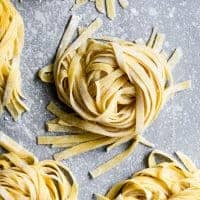
Gluten-Free Almond Flour Pasta
Ingredients
- 240 g (2 cups) Bob's Red Mill super-fine blanched almond flour
- 82 g (½ cup + 2 tablespoons) Bob’s Red Mill tapioca flour, plus more for rolling
- 44 g (¼ cup) Bob's Red Mill sweet rice flour, different from "white rice flour" or "brown rice flour"
- 1 teaspoon Bob's Red Mill xanthan gum, *see note
- ¼ teaspoon kosher salt
- 4 large eggs
- 2 teaspoons extra virgin olive oil
INSTRUCTIONS
- In a large bowl or the bowl of stand mixer or a large mixing bowl, whisk together the almond flour, tapioca flour, sweet rice flour, xanthan gum, and salt.
- Create a well in the middle of the flour and crack the eggs into the middle. Add the olive oil.
- Use the dough hook of the stand mixer to gently mix the eggs together with the flour on low speed, or, if doing so by hand, use a fork to lightly whisk the eggs together in the middle of the well, then begin mixing it all together with the flour.
- Once it's well mixed, use the dough hook or your hands to knead until it forms a dough. It using your hands, it will be quite sticky, so coat them in tapioca starch to knead. This dough is softer than traditional pasta touch.
- Roll the dough into a ball, dusting it in tapioca starch, and lightly flatten into a disk. Cut into 6 pieces and wrap the dough in plastic. If using psyllium seed husks in place of xanthan gum, see note below.
- Bring 3-quarts of water to boil in a large pot with a teaspoon of salt.
- One piece at a time, press the dough on a tapioca-floured surface until it is as thin as you can make it with your hands, reserving the other pieces in plastic wrap under a towel.
- With a pasta roller or rolling pin, roll out each piece into a thin sheet, lightly dusting both sides with tapioca flour each time you pass it through the rollers. If using the KitchenAid pasta roller attachment, send the dough through setting 1, fold it in half, then send it again. Repeat until it feeds through smooth, then reduce the thickness one stop and roll to a 2 or 3 thickness. Dust each side with tapioca flour before cutting.If rolling by hand, heavily cover your surface in tapioca starch and roll it until it is very thin.
- Either by hand or using the fettuccine cutter attachment, cut each sheet into noodles. To do so by hand, dust both sides with tapioca flour, fold it up lightly on itself, and cut into thin strips. Place noodles in a nest on a tapioca-floured baking sheet while rolling out the rest. If storing, place uncooked noodles between sheets of parchment paper in a freezer- proof bag. Freeze for up to 6 months. Cook frozen noodles straight out of the bag without defrosting.
- Drop the noodles into the boiling water and cook for 3-4 minutes, stirring occasionally. Drain the pasta in a colander and gently toss it with a bit of olive oil to keep it from sticking together.
- Serve with your favorite sauce! (Here I've served it simply as cacio y pepe, but I lalso ove making almond milk fettucine alfredo!).




 I served cacio e pepe with this homemade gluten-free almond flour pasta for dinner on Sunday and my three-year-old took one look at it and, without skipping a beat, instructed, "don't put that in my lunch tomorrow."
I served cacio e pepe with this homemade gluten-free almond flour pasta for dinner on Sunday and my three-year-old took one look at it and, without skipping a beat, instructed, "don't put that in my lunch tomorrow."

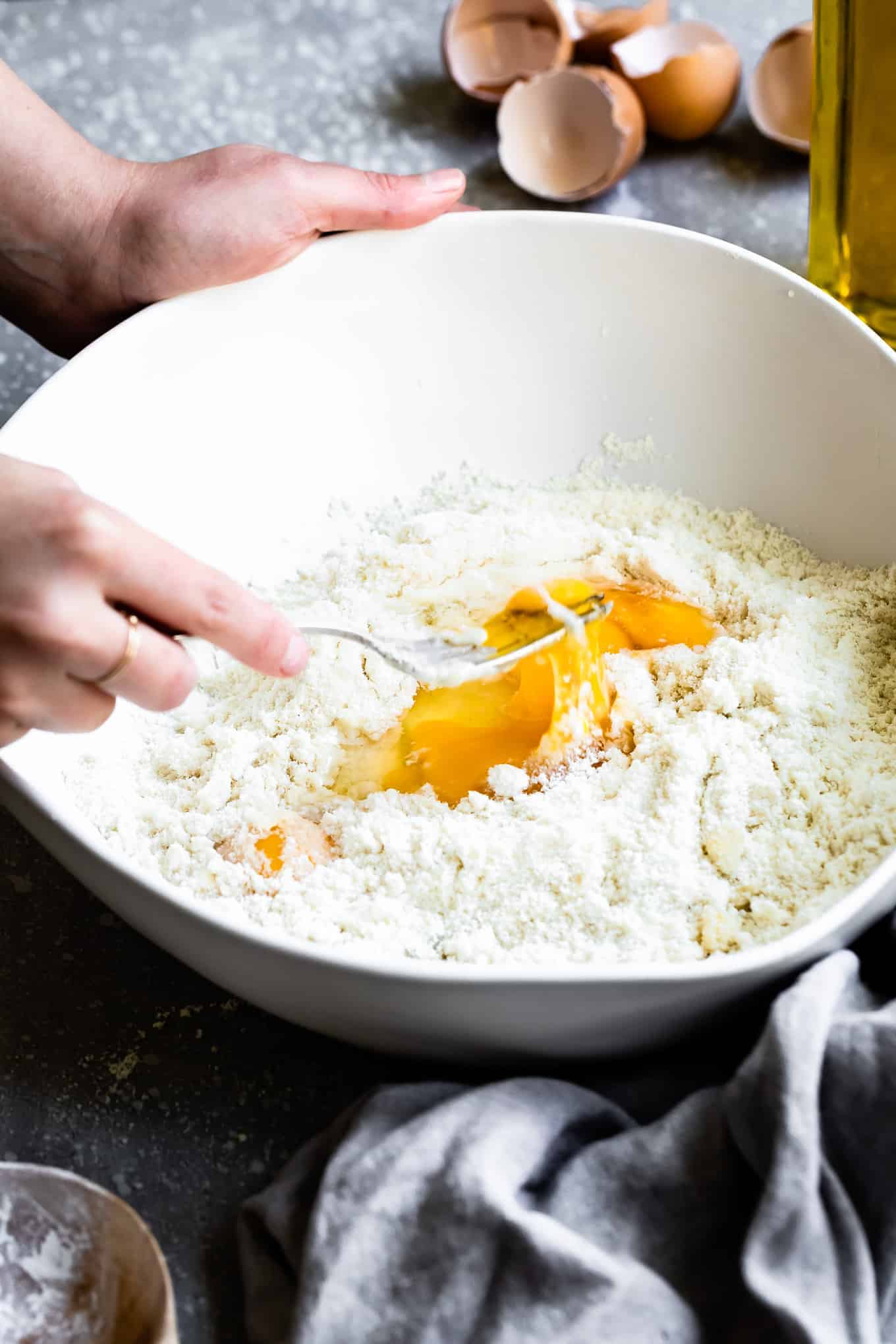


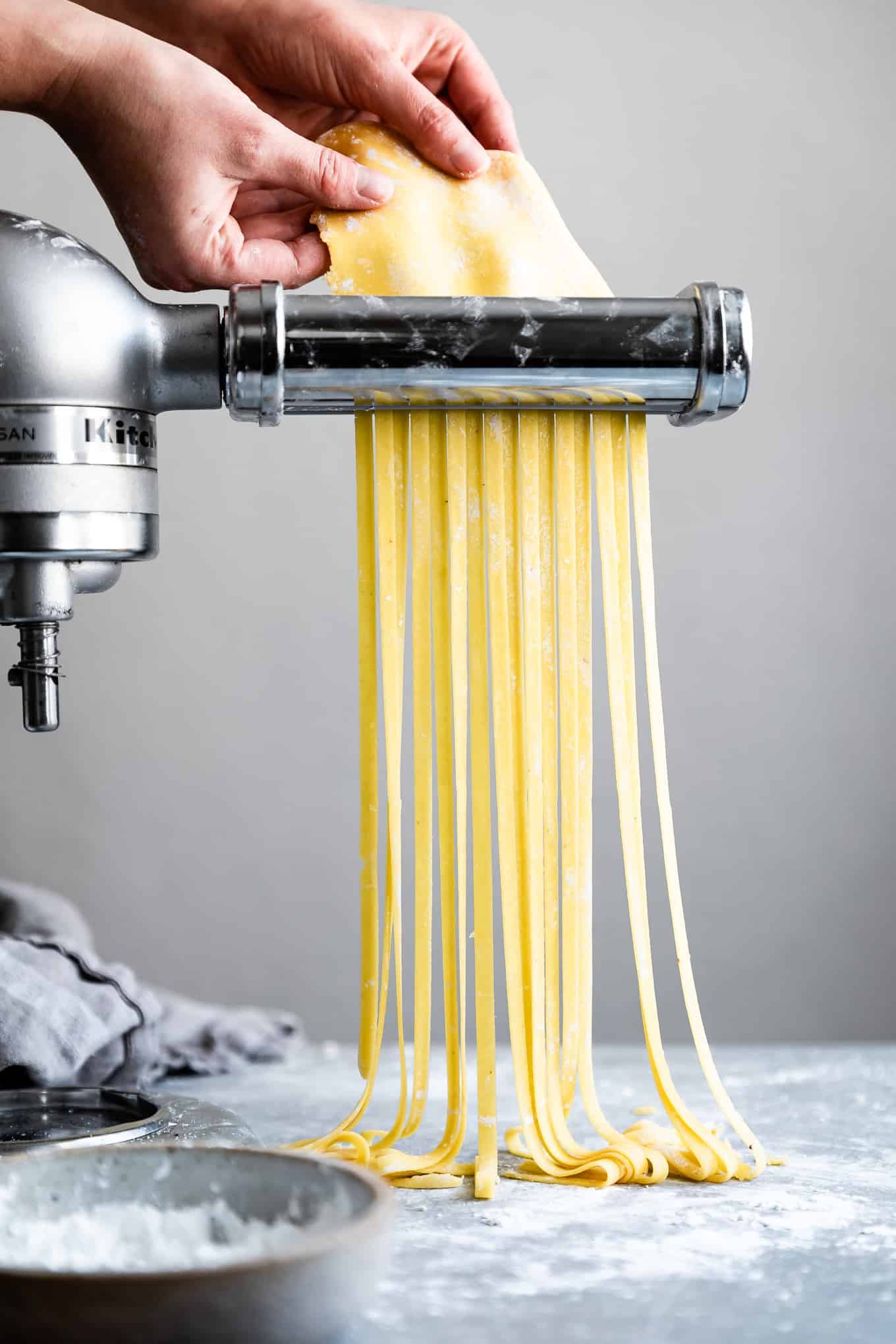
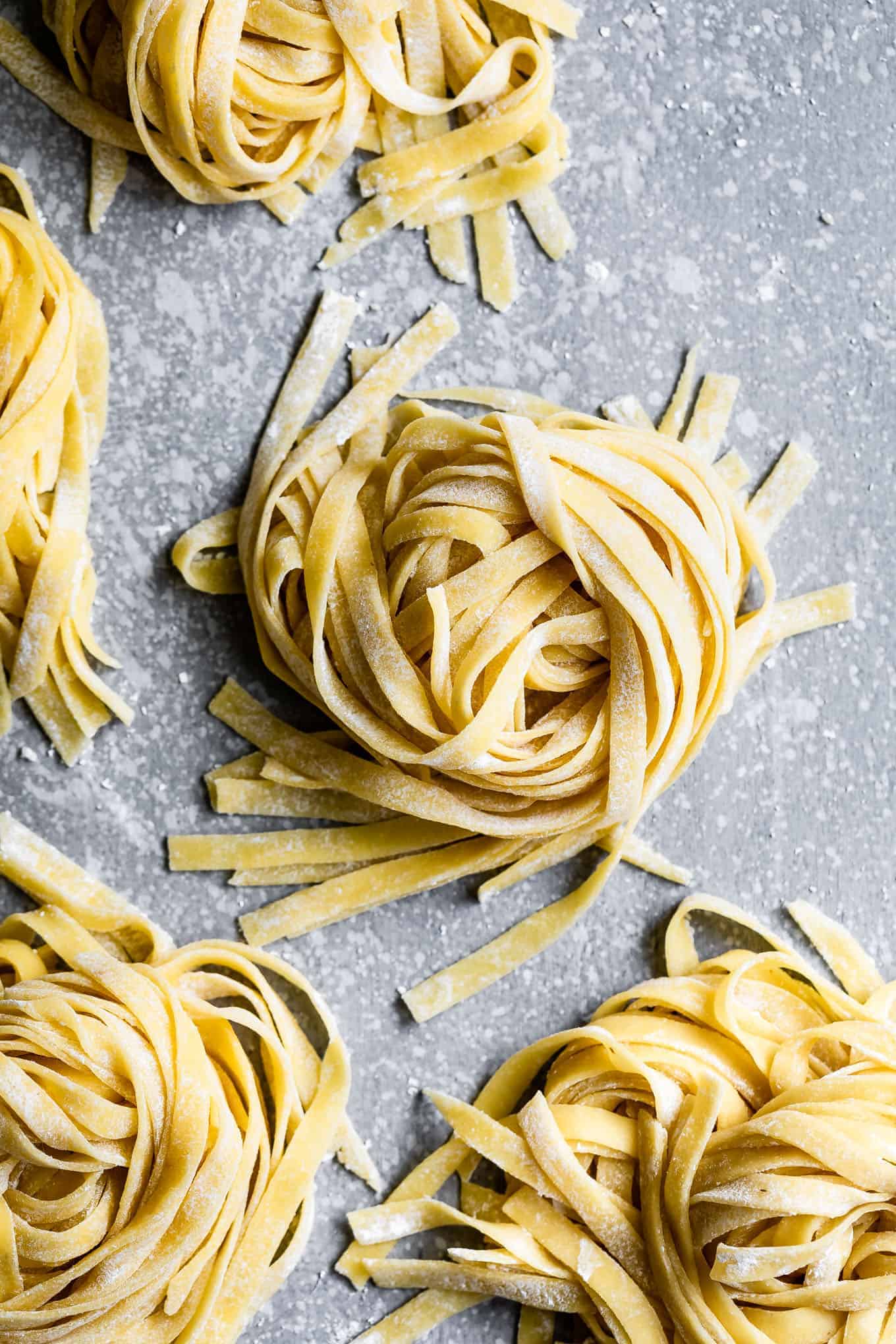
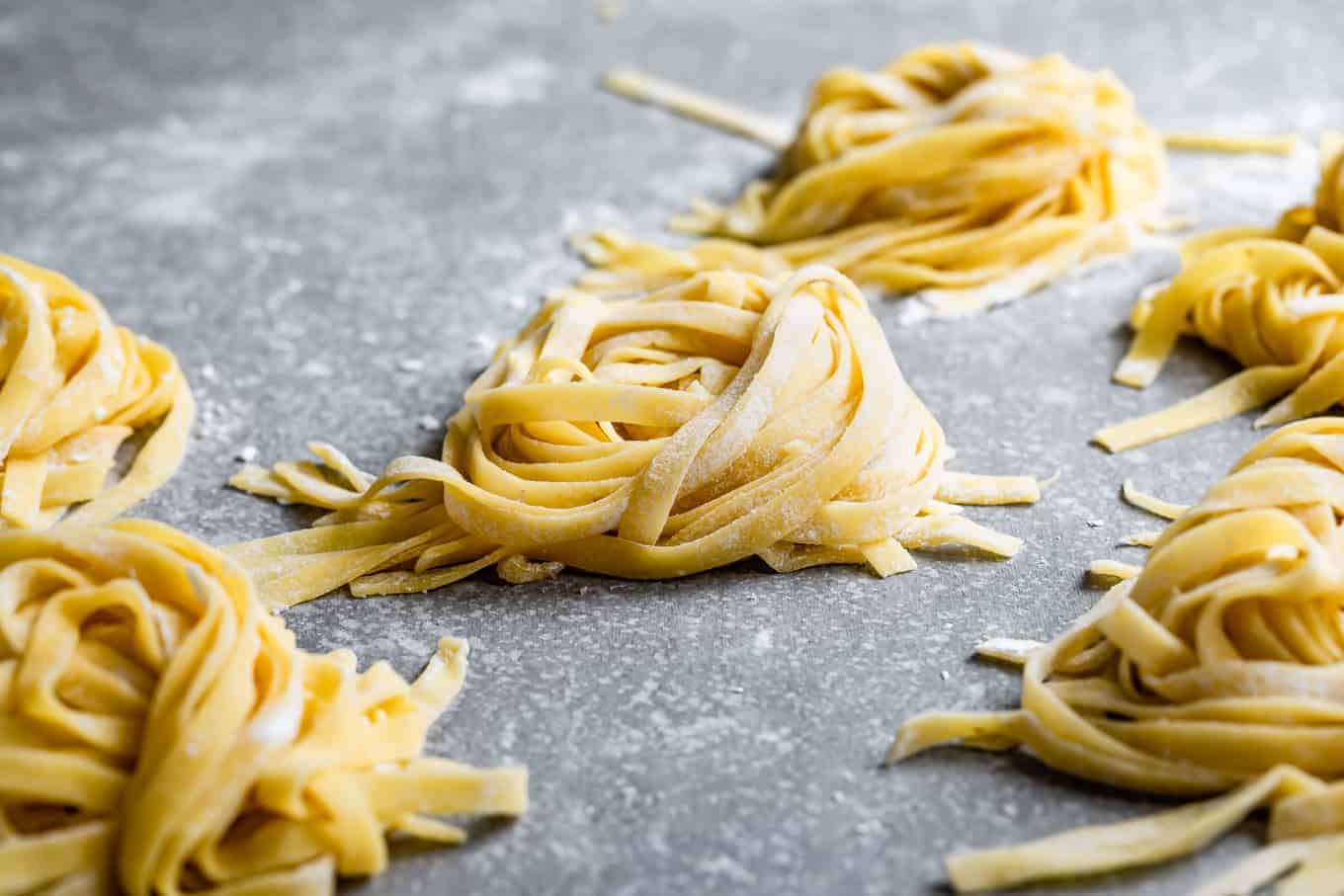

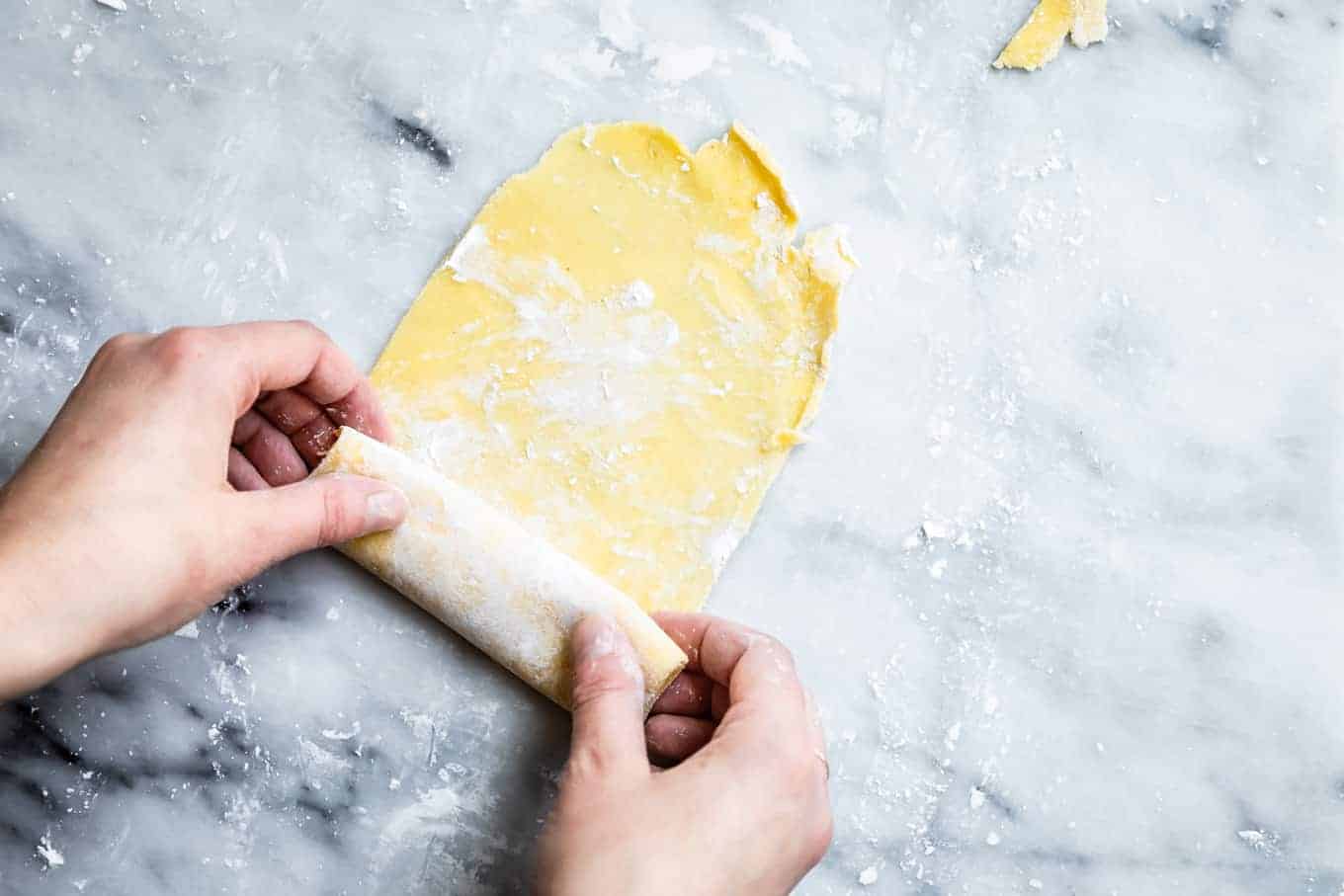

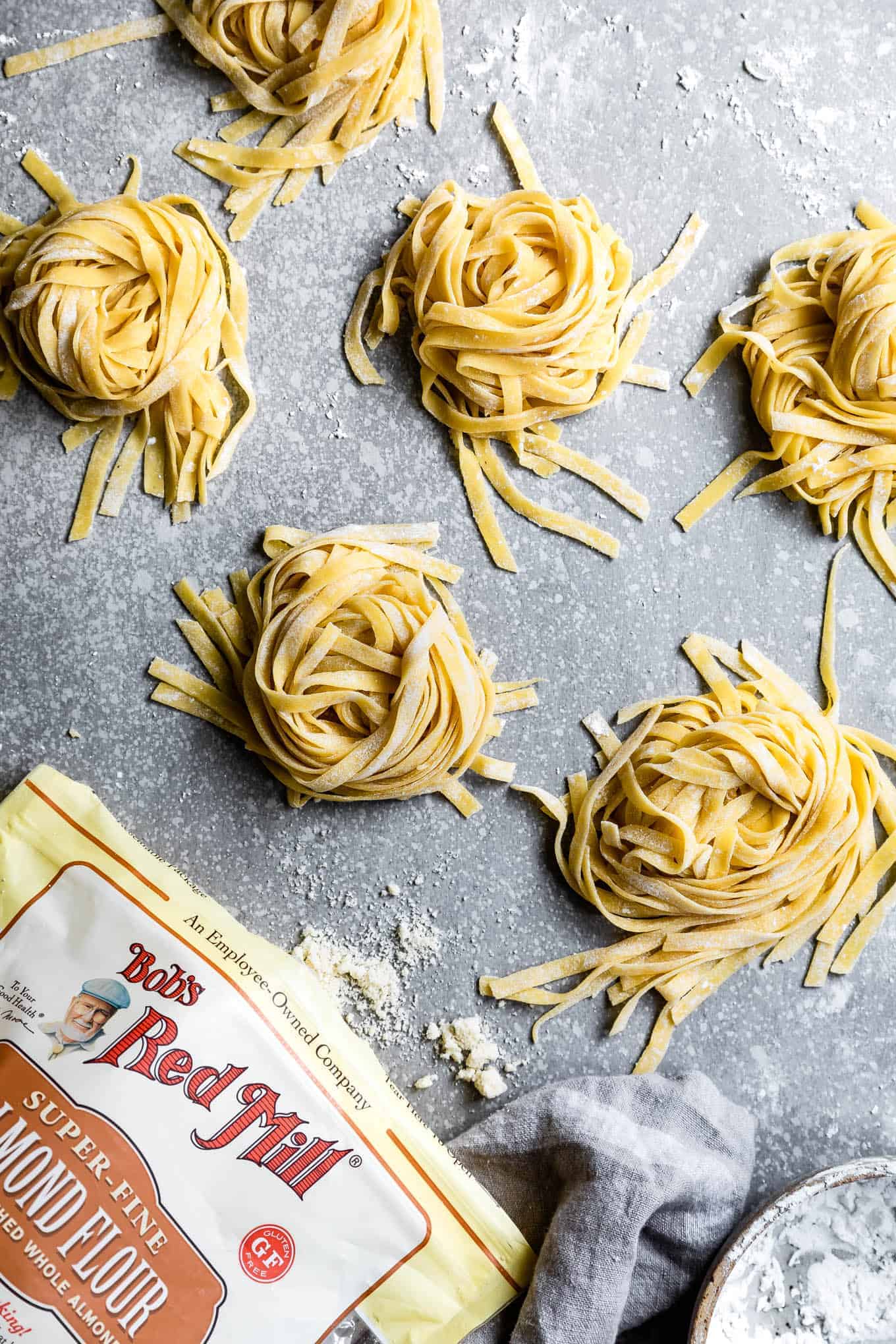

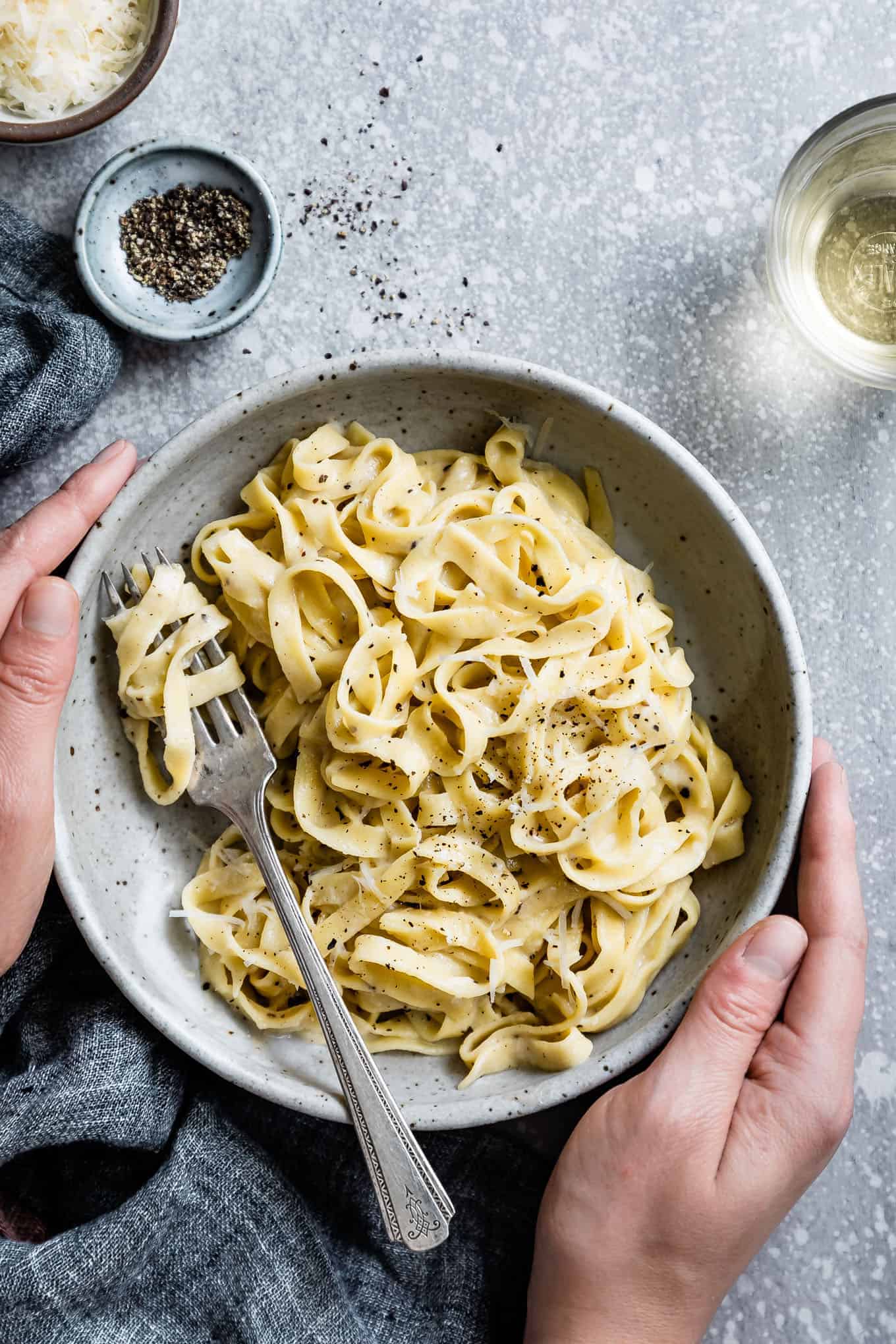
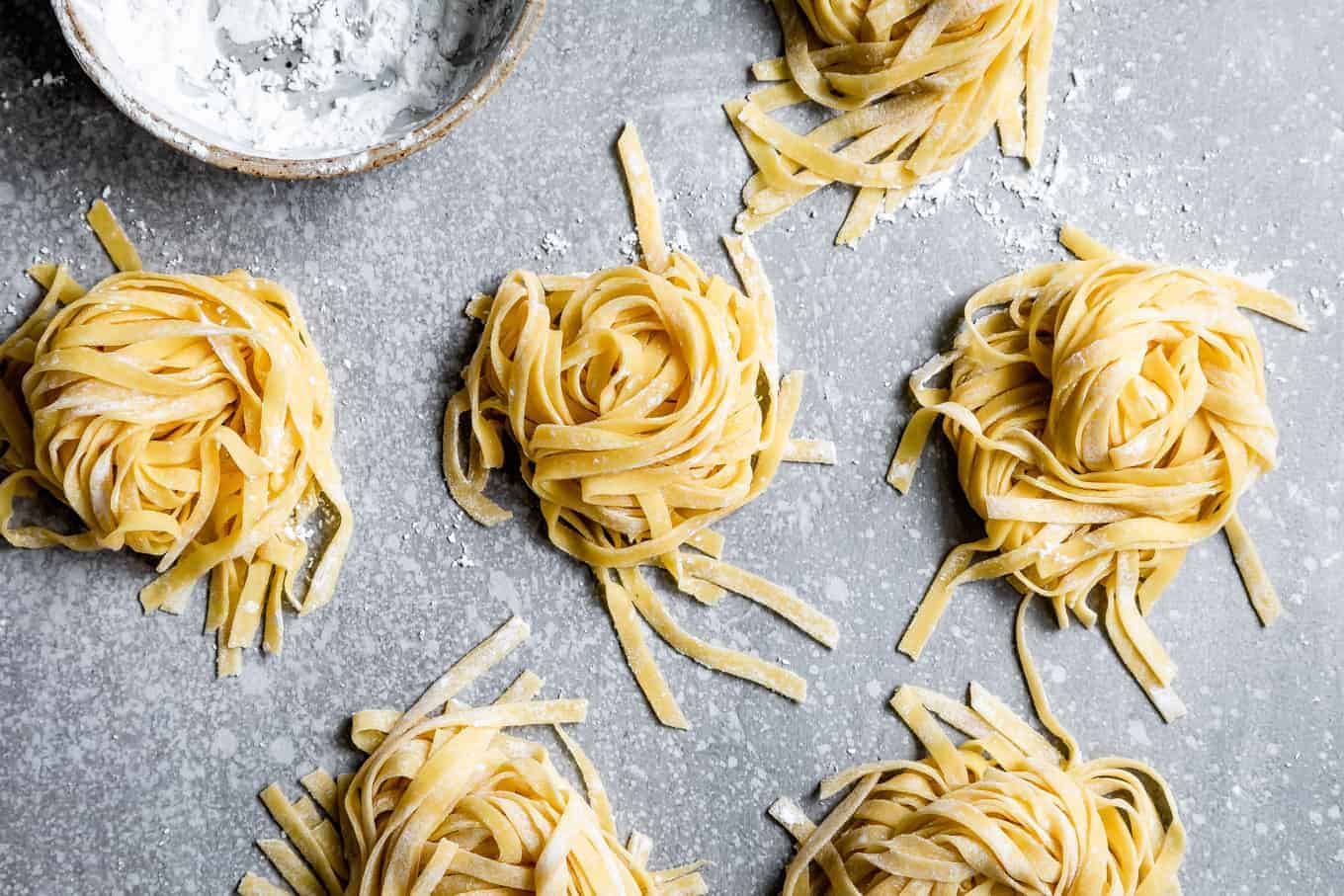
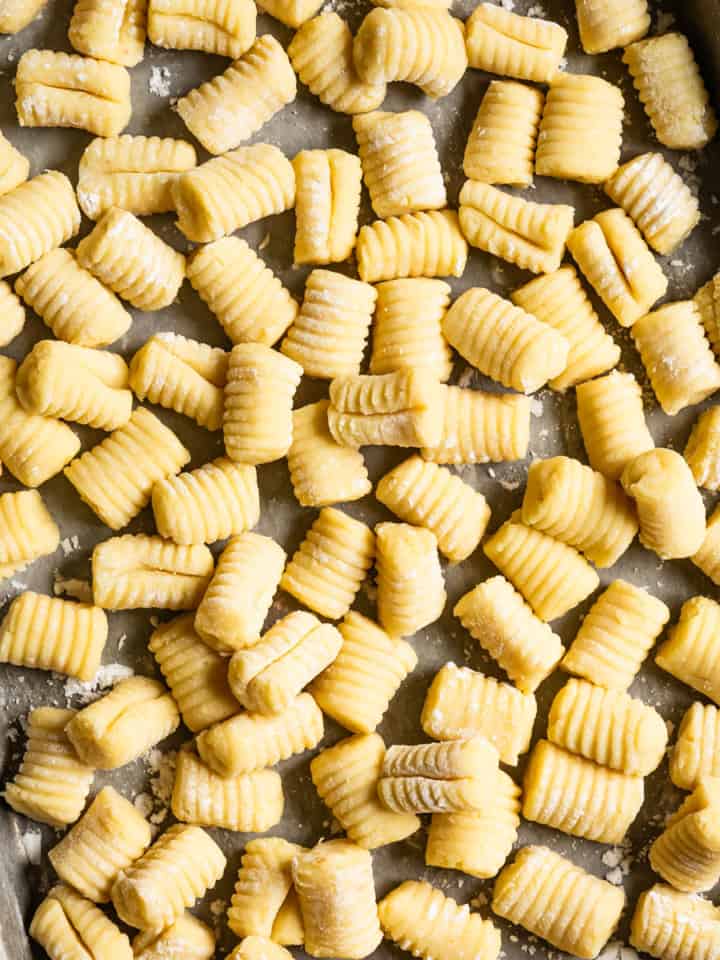





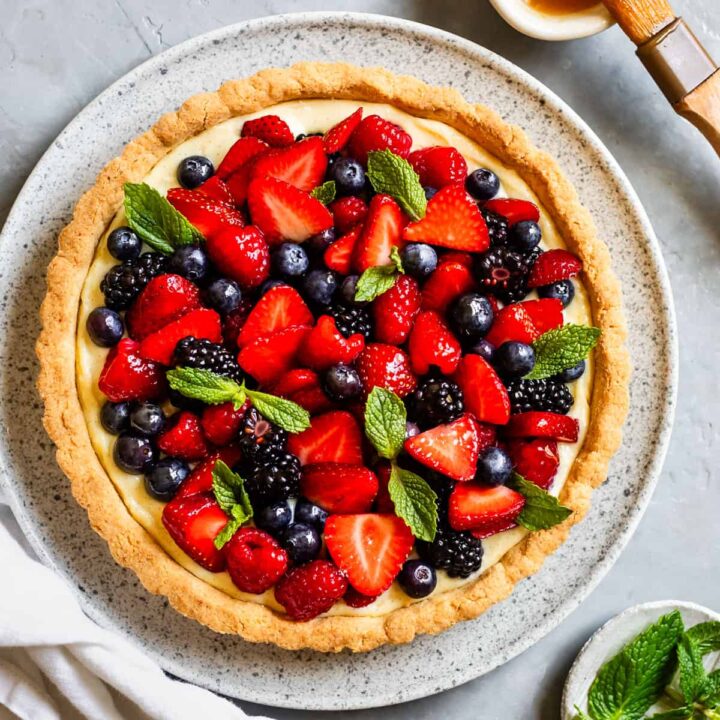


todd -
Can't wait to try making this for the fam!!
Lex -
I'm always trying to get my carbaholic to eat better! These might help! I feel your pain, Brent! What are the carb count in these, I'm keto.
Goombah -
hi,
to many steps to follow by reading.
you should include a video of you doing the recipe.
without the confidence of what to expect from your recipe, I'm afraid that I will not be trying it at this time.
Sorry
Brent -
Looks delicious. As my daughter is on a carb-only diet, perhaps this is how I can get some fiber and protein in her! Also, if you end up making "Don't put that in my lunch" T-shirts, I want one! That may be a well-used article of clothing in our household :)
Sue -
Why would she be on a carb-only diet? That is extremely unhealthy.
https://www.quora.com/How-long-could-a-person-survive-on-a-carbohydrate-only-diet
Amanda -
Because she’s a child, I’m assuming ????
Chrismarie -
And who is the adult in charge....that’s right! Mommy n daddy are. Say no. You can do it!! :-)
Not coming back here -
How fun! Parent shaming! So glad I found this blog and the people who know so much more about raising kids than everyone else. Thank you ChrisMarie!
Sarah Menanix -
First of all, pretty sure Brent was being sarcastic (in fact, I know he was because we're friends). Also, let's remember that not all families are the same and what works in one family, may not work in every family. We're all just trying our best! <3
*Just in case there was some confusion (which it seems there was from the comment above), I'm the blogger/recipe developer here, not any of the folks in this discussion above.
Elizabeth -
This post has me aching to break out my pasta maker! It’s looks so perfect and toothsome – congrats on nailing homemade gf pasta. I’m sorry that your heroic efforts were...under-appreciated by the pre-school set. I’ve been there.
Jason d brand -
Have you tried this in a pasta maker
Mimi -
Oooh, you had me at almond flour! I'm not a huge pasta person but my hub is and I'm always trying to get him to eat healthier. Any chance of getting the macros for this?
Wendy -
Hi there. Would these noodles hold up being used in chicken noodle soup?
Alison -
They were amazing in soup
Madison -
Have you tried this recipe with a pasta extruder? I have the kitchen aid one and I’m wondering if it will go through well enough to make the rigatoni. My experience with it for regular pasta dough is that it has to be very dry.
Sarah Menanix -
I haven't tried this almond flour pasta with the extruder - I also have the extruder but I haven't really used it yet! I did use it once and I can't remember which recipe I used, but if I were to try it again, I'd use it with this gf pasta recipe because it's less oily when extruded (when overworked, the almond flour pasta dough tends to get oily from the nut flour). If you try that, let me know how it works!
Cate -
Is this pasta strong enough to make into
ravioli? I was just lamenting on Saturday that good gf pasta was really the last frontier. This has me hopeful.
Sarah Menanix -
First, I should say that I've not yet made ravioli out of this particular pasta dough (because now I have two small children and very little dinner prep time;), but I'm certain it will work great! The texture is not far off from my chestnut flour pasta or my chickpea pasta both of which make great hand-cut ravioli! If you make it, please let me know how it turns out for you!
karen -
can this be made without rice flour iam on keto diet how many carbs are in this noodle reciepiekaren
Sarah Menanix -
I've not tried this recipe without sweet rice flour. Sweet rice flour has a special sticky texture that allows you to make the pasta without gluten to hold it all together. I might try replacing it with more tapioca starch - though I've not tested this so not sure how well it will work!
Laureen Stilling -
I may try this by replacing the rice flour with Vital Wheat Gluten which has no carbs and should hold better. I make a very low carb bread with vital wheat gluten, oat fiber and ground flax. It's awesome!!
Fran Carbone -
Laureen Stiling - can you share your low carb bread recipe with us?? thank you!
Kristine Leigh -
Hi Lauren,
did it work out with the Vital Wheat Gluten?
If so, did you sub 1:1 with the Rice Flour quantity? And did you still include the Tapioca starch as also high in carbs?
Charlotte -
Laureen Stilling would you mind sharing your bread recipe? I have been trying bread recipes and haven't found one that I'm really happy with.
Alison -
I used coconut flour as my husband cant have anything rice. It was great
Sam -
Perfect, thanks for posting! I’m not sure I can get the sweet rice flour but have coconut flour already.
Makeba Jones -
i tried it with regular rice flour and it was a bit crumbly. IIt was very delicious as well but I am going to order the sweet rice flour and also the coconut flour becasue i see that someone used it and turned out good. I love this recipe tho!!!
Sarah Menanix -
I really recommend the sweet rice flour - it's got the chewiness/stickiness needed to hold it all together, whereas regular white rice flour is brittle/crumbly. Excited for you to get sweet rice flour to try it out!
John Goedike -
I am prediabetic and need to watch my carb intake. And I love pasta!!!!! And idea what the count would be? Is this flour sold in Canada?
Thanks
John
Anne -
Nutrition information, please?
Sarah Menanix -
The specific ingredients used in each recipe can vary extensively from one person to the next. If you’re looking for this information, please plug the exact ingredients you use into any of the free online calorie counters, like this one.
Nancy I -
If you are going to post a recipe that is geared to a particular diet type, you should be prepared to provide nutritional information. You should not be telling your readers to do it themselves.
If people deviate from the recipe then they would have to expect that it will change the nutritional info.
That being said, you could easily provide the information “based on the recipe as it is written”.
You’ve completely lost me, due to your unwillingness to do this.
Janeesa -
Lol, chill out and use My Fitness Pal for the specific ingredients you have. Problem solved!
Emma -
Are large batches able to be made ahead of time and saved for later in the freezer perhaps?
Sarah Menanix -
Yes! When I make pasta in advance I make sure to dust the noodles well with tapioca flour before curling into individual nests. I then place those nests on parchment paper in a sealed freezer bag and freeze until ready to use. When ready to cook, cook the noodles directly from the freezer without defrosting!
me -
Tapioca flour is too starchy!!! Is there anything else I can use to make is even more keto friendly.
Sarah Menanix -
I’ve not tried this recipe without the tapioca flour. Tapioca flour helps the noodles stick together and gives them the soft texture, without it I'm afraid the noodles would be brittle. I might try replacing it with more sweet rice flour – but I’ve not tested this so not sure how well it will work!
Jay Cohen -
Thanks for working up this recipe. I'm making Rav's today, will report back.
Kate -
How to did work out?
me -
I may use this dought to make "pasta" calazones
Sarah Menanix -
Would you boil them? I don't think the noodles would hold up well to lots of filling as gluten-free pasta tends to be a little more delicate. That being said, it'd work great for ravioli!
Amanda ortiz -
What is the net carb for the almond flour pasta ?
Sarah Menanix -
I don't calculate the nutritional information on my recipes, but I recommend putting the ingredients into a free online nutrition calculator!
Julie -
Amazing! I had to substitute the sweet rice flour with arrowroot, but I used the same amount as the recipe calls for. I then entered the ingredients into MyFitnessPal, made the whole recipe 6 servings, and net carbs were only 12. Some may think that’s high, but for a whole meal, I’ll take it! Don’t let anyone get mad about this not being Keto, I never read anywhere that it was supposed to be! I was also able to take one of the 6 dough balls and serve it as 3 portions, so actually only around 4 net carbs. Wonderful recipe! I’ve added a pasta attachment to my Christmas list because of you! Thank you!
Noel Derecki -
Julie, I don't know you, but I loved your comment. It was super-helpful, positive, and realistic. I'm going to try this as well as the original, which looks amazing!
Sam -
Great to see another sweet flour sub, thank you!
Maureen Gibbons -
Can you make this pasta with gluten flour and almond flour, as I'm on keto diet,
Sarah Menanix -
I'm really not sure! I've not tried the pasta with all-purpose flour, but I think it would probably work!
Josefina -
Hi! Thanks for this wonderful recipe. What can I use instead of rice flour?
Lara -
Someone said they replaced the rice flour with arrowroot flour but I don't have arrowroot so I'm going to attempt to add the almond flour and the tapioca flour and then probably a little bit extra tapioca in place of not having arrowroot but they said arrowroot in the exact one to one with the sweet rice flour so that's an option and there was someone that said they used coconut flour in place of the rice for their husband who can't have rice so those are options.
Ronald P Trotta -
USED ALMOND FLOUR TO MAKE MANICOTTI PASTA (COOKED PASTA) WITH ALMOND FLOUR , ALMOND MILK AND A SMALL AMOUNT OF ALL PURPOSE WITH EGGS. i WANT TO TRY TO USE THE OTHER POWDER YOU SUGGESTED IN PLACE OF THE ALL PURPOSE. BUT THEY ARE AWESOME.
Sachiko -
Thank you so much for creating this recipe. I made raviolis with this dough and they were absolutely fantastic. I made some noodles with leftover dough and they were great too! GF raviolis are expensive but now I can make at home! Thank you!!!
Orwell James -
Can the eggs be substituted with water (or possibly a healthy oil) for a lower-fat version? I would assume between the fats naturally in the almond flour and the xantham gum there should be enough emulsification, but it is strangely hard to find an almond flour pasta recipe without egg online!
Noel Derecki -
Hi, Orwell. Your question is interesting, but likely only answered by empirical methods! I'm a scientist (neuroimmunologist by trade, but I dabble in material science with polymers, co-polymers, hydrogels, etc.) and much of that applies to culinary science. An example would be controlling a maillard reaction with sodium bisulfate or potassium bisulfate and swapping oligosaccharides in and out with monosaccharides and disaccharides to modify physical properties of the final product.
Anyhow... my main comment is that I've found emulsification to not necessarily be a linear function of "percent lipids" but rather is affected by energy (heat, mixing, etc) cofactors, pH, and the structure of the lipid itself which all figure into hydrolysis, etc.
Please try and let me know! I dream up lots of stuff that works "in my head" but not when I try it the first time...
Sharon Male -
Would this be suitable to use for lasagne?
Sarah Menanix -
While I haven't used it for lasagna before, I don't see why it wouldn't be delicious in lasagna!
Judy Besserman -
Can coconut flour be used in place of rice flour?
Sarah Menanix -
Hm - I've not tried that! However, the sweet rice flour is used to help bind the dough together and make it chewy, which I don't think coconut flour would do. If you don't have sweet rice flour, I would recommend using more tapioca flour, then possibly add a bit more xanthan gum or psyllium seed husks! You could also try adding 1-2 tablespoons ground chia seeds if you have them (ground in a coffee grinder) and adding a tablespoon more water.
Lara -
When you say adding a little more tapioca and a little bit more Xanthium what are you talking like placing one to one the rice with the tapioca like the same amount of tapioca as you would rice flour on top of the amount of tapioca you already use? I'm just trying to make sure I'm very visual and I don't have visuals here so I have to be extremely literally explained I apologize for that that's just how my brain works. And how much extra xanthan gum? And I don't have any Chia seeds or anything like that I can use.
Sarah Menanix -
While I haven't tried it (so I can't guarantee the outcome!), what I would try is replacing the sweet rice flour by weight with tapioca flour (on top of the tapioca flour already called for) or cassava flour, then possibly adding 1/2 teaspoon more xanthan gum. My guess is that it will be moderately more delicate while rolling out, so just go slowly and have patience!
Steven L BASS -
Although I used exact measurements it's far too dry and won't form a dough. What sholu I add?
Sarah Menanix -
Did you Bob’s Red Mill flours - I’m find that different brands have a finer or less fine grind which can absorb moisture more or less. I also recommend measuring by weight has the best outcomes for gf. Not to worry, I would knead in a teaspoon of water at a time until it comes together!
Lara -
Okay I'm having the opposite problem that most people have if there's a problem. Most of the time when someone says I have a problem it's because it was too dry and not moist enough but for me it was so sticky that I could not stop it from sticking like a paste to my hands 3 inches thick and I had to get a knife and carefully wedge it off of my fingers and the more that I just kept kneeding it I kept becoming this consistency which is stickier and stickier and stickier and I never could get it to be at a point where it stops being sticky and eventually forms into a dough is that because I chose to not have the rice flour and do the extra tapioca in place of the flower like you had told me in one of my comments /questions? Because I had asked if I don't have the rice flour what could I do and ask if I could use extra tapioca and you said yes so I did exactly as instructed there in the reply and I feel like maybe I had too much tapioca because it is a starch and it does get kind of 's Moti-ish when wet so maybe when it mixed with the eggs and the oil it just became more and more pasty I don't know I'm just trying to figure out why it does not want to get unsticky. when did flower my surface with tapioca and I think that made it worse because I was just making it more sticky by adding more tapioca and it kept sticking all over my counter and I wasn't getting it to come off the counter so I had to wash it off and then I even tried to do it between parchment paper but it would stick to the parchment and I had to eat very carefully if you will with a knife off of the parchment and I ended up sticking it in the freezer to make it solidify and that helped a little but what am I doing wrong?
Sarah Menanix -
Hi Lara! Oh no! I'm so sorry you had trouble. The tapioca substitution comes with the caveat that I haven't tested that version so I can't confirm how well it would turn out. I would still love to troubleshoot what may have gone wrong! In the event it would be too sticky, I would have gently kneaded in more tapioca starch. The tapioca starch mixed with liquid shouldn't be overly sticky without heat added though, so I don't think that would cause the stickiness issue. A few troubleshooting questions/ideas:
1. Did you use Bob's Red Mill branded superfine almond flour (not almond meal) and tapioca starch? I notice other brands of tapioca flour absorb moisture more or less and some almond flours are much oilier or less finely ground, which will make a big difference. If you used a different brand/type of flour, then that's my first suspicion for what may have gone wrong.
2. Did you measure by cup or weight? If measuring by cup, there's more room for error and you may end up with less flour than is needed.
3. Did you use a stand mixer with a dough hook or by hand with a fork to mix the dough? (If you overmix the almond flour dough with some other method, ex. food processor or hand mixer, the oils from the almond flour will get worked out and your dough may become more sticky).
4. Using the right size eggs is also another important thing as an XL egg is significantly more liquid - just wanted to confirm you used large-size eggs?
Hope this helps and we can figure out how to make sure you have yummy pasta next time!
Lara -
I watched somebody online explaining how to make a well inside of the dry ingredients. He shows, you drop your eggs in and then you slowly whisk your fork not breaking the wall of the well that you made with your dry ingredients but just whisking a little at a time into your eggs and then basically you eventually start breaking more of the wall down and whisking that more in. When you have enough that you can start using your hands then go for it. I had to watch this video because I had never made pasta like that. I don't think I'd ever actually made pasta before now. I have made dough before but never pasta so I kinda didn't know how. he explained that if you do just the egg yolk it makes the pasta more yellow but that you can use the whole egg if you want . I might in the future try to use just the egg yolk skipping the egg whites just to see if that makes a difference if it's less liquidy. But to answer your question I did use Bob's red Mill for everything and I used superfine blanched almond or whatever it's called it's more white. I do also have the more coarse almond flour that is more dark tone but no I did everything I was supposed to and I followed it exactly. You did mention that I could possibly sub extra tapioca than was already called for in the recipe one to one for the sticky rice flour and so I tried it . I knew that it hadn't been tried before but that it had been suggested as a possibility so I was like I'll be the one to test it out and see how it works.
I think it might have been too much making it too sticky. I don't know. I'm not really sure where the error was exactly. But what I should have done is kneeded it the best that I could and then stuck it in the freezer and after an hour in the freezer I should have taken it out and then played with it because I think I spent oh maybe 45 minutes kneeding it by hand because I didn't have a stand mixer . I should've mixed it until I couldn't mix it anymore and then just stuck it in the freezer. But I stayed at it for 45 minutes. I can say I did get it after 45 minutes to where it was not really sticking to my hands as much but it still significantly was pasty on my fingers and I had to use something to scrape it off my fingers into the bowl but after 45 minutes it was pretty decently workable where it wasn't as sticky. I decided to dump it onto parchment and yes it's stuck so heavily to the parchment that it almost ripped the parchment. I just slapped another parchment on top and I used my hands to literally smack and smack it flat and then stuck it in the freezer and then after it was pretty decently chilled I took it out and I used a rolling pen and I also was able to pry it away from the parchment at that point and then I just worked out it until it was nice and flat for another five minutes and then stuck it back in the freezer because I was getting it warm with my hands and I needed it to stay chilled.
Then I attempted to roll it into a log so that I could cut 1 inch chunks as in the the picture on your site but it didn't do exactly what I wanted so I decided to play with it like Play-doh. Just took little tiny chunks and I rolled it in my hands but I had to coat them so it didn't stick to my hands. Keeping it chilled was the easiest way to keep it from sticking to my fingers and I just rolled it into little miniature 3 inch "snakes" as one does with playdoh and I was able to flatten them out and then use my knife to pick them off the parchment and cut them in half to make them even smaller and then I have my noodles. It was a painstaking process but I got what I wanted and I now have a pretty good size Tupperware full of egg noodles.
And they are very thick in comparison to what I was expecting. I was expecting them to be very very easily breakable if not using a noodle machine to stretch the dough and then cut because I saw some other people that questioned it and were told if you don't have this or this you might have more fragile dough and that's what I was expecting but I got sticky still and I like I said had to chill it in order for it to get solid enough if you will that I can play with it. Once I got it into the noodles that I want they came out more like gnocchi consistency and thickness but shape like a noodle and when I boiled them they were thick like gnocchi but they taste like egg noodles . So I'm not really sure where the problem happened. BUT I did take my smarts and cleverness and I still got the results . If somebody else wants to try doing what I did which is followed the recipe exactly to the t except switch out the rice flour and use 1/4 cup of tapioca in its place knowing that there's already tapioca to start with and see if they get the same result as me or if they can figure out how to get it normal and let us all know that would be great. Or I can in the future try it again and do some altering knowing what I know. but if anybody reads this and hasn't tried it themselves my way but has a background in some areas they might know some suggestions that would be great. At least I got them done.
I mean they literally look like crap and I cannot seem to upload a photo to show you guys but they taste like egg noodles with the consistency of gnocchi because I wasn't able to get them quite like a "flat" noodle but that's okay they taste like egg noodles and that's all that matters. But I felt a duty to tell everybody if you're gonna try what I did you might have the same result just FYI so now you can have my experience to guide you if you try that.
Christina -
Wow! This pasta is so good! The texture is perfect! It’s definitely dinner party worthy! Keeper!
Becca -
Can you sub coconut flour for the rice flour?
Sarah Menanix -
I would not recommend that. Coconut flour absorbs liquid so it would be very dry, but it also does not have the necessary stickiness component. The sweet rice flour is used to help bind the dough together and make it chewy, which I don’t think coconut flour would do. If you don’t have sweet rice flour, one reader above said they used arrowroot starch with success. I may also try subbing in more tapioca flour in place of the sweet rice flour, then possibly add a bit more xanthan gum. You could also try adding 1-2 tablespoons ground chia seeds if you have them (ground in a coffee grinder) and adding a tablespoon more water. I've not tried this substitution, but that's what I'd try first!
Teri Wentworth -
What about nutritional value?
Calories?
Carbs?
kory kulick -
What are the carbs in this recipe?
frederick -
I like the way you explain how to do things. They are simple and easy to understand. I have been trying to make pasta with out enough starch and they would break in pieces.Now I tried your receipt except I changed and substituted a binder called not xanthan not guar which I bought at Whole Foods called Pamelas. it was a substitute for the Gar Gum. When I rolled the dough thicker and made the pasta wider it worked out pretty go. The only breakage I had was at the joint where I had folded the pasta. I put a lot of tapioca floor when I rolled it out
Do I need to add more starch. My mother made home made pasta when i was a kid, and it always came out just perfect every time.
I would love to hear your comments.
Frederick -
Do you have receipt for a simple almond bread.
thank you
Frederick
Jeanna Parrish -
FYI I bake and make bread and pasta all the time with flour. So I know what I’m doing.
Krista -
Wow, this is super rude! I have made this recipe multiple times and it's come out beautifully every time, so I would suggest troubleshooting what may have gone wrong on your end instead of writing malicious comments that provide no insight to Sarah or anyone else. FYI making bread and pasta with gluten-free flours is very different than making bread and pasta with wheat flour, so you may want to consider that.
Monika -
If you're wondering if this works or is worth trying, this recipe is AMAZING!
I'm thrilled it tastes fabulous and holds together beautifully. Being GF, it may be a bit more delicate, but it works well with a pasta roller attachment, can be cooked fresh or from frozen, and holds up to serving with a spoon or tongs, and with a chunky or smooth sauce.
Thank you very much. :)
It is very special and will be in my repertoire now for a long time. I used this as a base for my first pasta ever made from scratch in my life. With the GF diet for the last 25 years, I'd never bothered trying before. I got a Kitchenaid attachment for Christmas, so needed a recipe. This one had ingredients I like, and enough directions for troubleshooting that I went for it. Having made this 4 times now: try #1 was remarkably fabulous, #2 was initially dry so I added some water, #3 I learned that adding flour on every roller step is less-needed for my evolving mix, #4 went really smoothly. As a 'sage' ;] with experience now, I've heard for years, and read here, pasta is dependent on humidity, climate, temperature, specific brand/flour texture, and level of dough handling, so my tips to others here who are having trouble: be FLEXIBLE and RESPONSIVE. If the dough, after 2 minutes with the dough hook, is dry and not quite taking in all of the flour at the bottom, add a tsp water. Push in the remaining flour bits or dry chunks with your hand or a spatula. Make changes in small increments. If it's too moist -sticky-, add more flour by stages. Do NOT overwork the dough! Even kneading by hand, if you're handling this for more than 5 minutes, there are other problems.. Weighing ingredients is more reliable than volume measurement.
So, I needed to use duck eggs. I know they are bigger than a large chicken egg. I went ahead with the recipe, with the awareness I'd need to add more flour. My trend for the recipe is currently proportionally lower on almond flour, which I may adjust in future; but it is really lovely like this:
240 g almond flour
180 g tapioca flour
100 g sweet rice flour
1 - 1.5 tsp xanthan gum
1/4 tsp salt
4 duck eggs (272 - 285 g of egg)
2 tsp olive oil
What I'm doing:
*Weigh and sift the flours into the mixer bowl.
*Add in the rest of the ingredients too.
*Use the dough hook; mix the ingredients until they come together, and about a minute beyond that so that you have a nice cohesive chunk of dough. If the flour is still 'showing' or there are a lot of crumbles at the bottom of the bowl, push them into the dough. If it still doesn't hold, add water by tsp increments until you have the blob. (And add less flour to start next time.) If the dough is sticky, keep adding flour until it holds together. I read somewhere, if using a pasta roller, the GF dough needs to be soft but not sticky; if you break off a chunk and it sticks to the fingers, you need more flour; if it separates into a piece you can roll between your fingers, you're good.
*Pull dough off the dough hook, make a ball, flatten a bit, and cut into 8 segments (rather than 6 with my resulting more dough). Wrap in plastic.
With each segment,
*Mush/press into a narrow rectangle. Flour by sprinkling tapioca flour through a sieve. Run through pasta roller attachment set at '1', fold in half as described, re-run 1/2 times until 'silky'.
*Cut the resultant piece in half so it's manageable for noodles.
*Run through on '2', then '3', then '4'.
*(for me, only now do I sift, then spread, more tapioca flour onto both sides of the piece. NB you would need to do this every time the dough is 'wet' or 'sticky' through the rolling steps; but I've figured out a good base flour level and consistency for this wintery season and these flours in my home, where I don't need to add more flour until this noodle-cutting step.) Run through the fettuccine cutter at '4' and make a nest by collecting the noodles as they form, with a rotating hand motion.
*Repeat for the other half of the first segment.
*Repeat for the other 7 segments.
I set half of the noodles for immediate use. The other half are placed on wax paper/parchment on a pan as they are made, put in the freezer for 1 hour, then transferred to a ziplock/glass/plastic container for freezer storage until needed.
I experimented with a few things. '3' thickness is fine for fettuccine too; but I can get away with using '4' and prefer the lighter texture. I haven't yet tried '5'' but don't feel the need for a thinner pasta. I tried spaghetti too: it works; but the mouthfeel on fettuccine with this recipe is preferred by family. Flouring on that last step is super important as the noodles otherwise stick together as you add to the boiling water and you get chunks and blobs. It is even worse with noodles if you freeze them without enough flouring just before cutting the fettuccine. The noodle cutting will not be perfect as you start out. There are messy ends and edges. Keep it all; it still tastes fabulous! Visually, it is less apparent when your diners are eating. At first I thought to re-press all the 'messy' parts and edges or short noodles, but the 'rustic' aspect of fresh pasta is part of the allure, and re-rolling and pressing over-works the dough and messes up the pasta press with more 'oily extrusions'. It makes cleanup harder.
The flavour of these noodles is wonderful! I love almonds but do not love marzipan. I worried these would taste eggy or like marzipan. NO. It turns out they are delicious. When you pull them from the salted water (I pour through a colander), add a bit of ghee or nice olive oil to keep them separate. The almond and egg manage to blend to create a sweet, delicate flavour. Hubby who loves marzipan doesn't taste that essence of flavour at all. While I do, I enjoy it. It's a very light sweetness that is covered by a standard tomato-based sauce. The noodles are so tasty I love to eat them unsauced just with the ghee/oil for a bit, and I look forward to trying them with a light garlic or seafood-based sauce too.
Now I look forward to trying all your other pasta options. Thank you again, Sarah!
Ellie -
Can you dry the noodles for later use?
Sarah Menanix -
I've not tried drying them, but there are some instructions online about how to dry egg noodles and I think it should work equally well for this recipe, though I can't say for certain.
When I make pasta in advance to use later, I freeze it. I make sure to dust the noodles well with tapioca flour before curling into individual nests. I then place those nests on parchment paper in a sealed freezer bag and freeze until ready to use. When ready to cook, cook the noodles directly from the freezer without defrosting.
Linda Petrella -
I am thrilled to have found this recipe! I care for my 91 year old Italian (born in Italy) mom. She was recently diagnosed with gluten intolerance and as a result, we've have to do a 180 as far as food choices...no more crusty Italian bread, no 'good' pasta (her words) In addition, her glucose #'s were high. Needless to say, It's been a challenge to find tasty low carb, gluten free foods. I made these noodles and just about cartwheeled when I tasted them...they were SO good! She devoured her bowl full and was stunned when I told her they were low carb/gluten free. I can't wait to go through all of your recipes to see what I can tackle next. Thank you very much for your efforts in creating GF recipes....we are gratful!
Colleen -
Hi! Has anyone attempted to make pierogies with this recipe? It’s a Christmas Eve tradition for my family and due to some gluten intolerances, I’ve been searching for a good recipe for the last few years. Does the sweet rice flour add sweetness to the noodles? Never worked with it before.
Kathy -
Hi this will be the first time I try making pasta at all; and I like the idea with almond flour. If you were to add Xanthum Gum how much would you add? Thanks in advance
Sarah Menanix -
This recipe calls for 1 tsp xanthan gum! I hope you love it!
Ariel Holub -
Can you provide the nutrition info pleaseeee?
Mary -
Can you use an egg substitute for this?
Nk -
I’ve made this a few time and used it as linguini and as a filled pasta (ravioli with pumpkin filling). Always comes out perfectly. My advice is to have a ton of tapioca flour on deck for dusting, and for applying between passes through the roller. I can’t really get it to work past roll level 2, but I like a thicker pasta or can just carefully get it a little thinner with a rolling pin anyway. Very tasty five star recipe.
Reece m -
Two questions
Does this recipe freeze well?
And
Have you tried using this in an extruder?
Sarah Menanix -
The recipe freezes great! I freeze it after I roll/cut it out into whatever pasta I'm making.
I've tried it in the extruder recently and I what I discovered is that the oils in the almond flour gum up in the extruder. I have better luck using this whole grain gluten-free pasta or this chestnut flour pasta in the extruder!
Karen Liguori -
I'm allergic to tapaioca ( & I might add, flax seed, egg both white & yoke & baking yeast too. I haven't been able to eat these or anything with them for years now, but I would really like to make pasta & thought Almond flour might work. I'm think"n if I leave the tapioca flour out and just use a mix of the "stickty" flours it should work and use arrowroot, sweet white rice & any others you could suggest, the dough might be fragle, but would still work. Oh and by the way, I can't use anthem gum either, it give me a tummy ach.
Sarah Menanix -
I think you might have trouble without the xanthan gum and egg. You could try adding ground chia seeds (use my dumpling wrapper recipe as a reference!) in place of the xanthan gum. Without the egg, the dough might be too fragile and fall apart in the water, but starting with something similar to my dumpling wrapper, and hand rolling/cutting would be your best bet!
sarah -
Hello!
If i did thisa recipe for lasagna sheets, do you think i would layer the sheets in the dish uncooked? or cook before assembling the lasagne?
Thank you!
Sarah Menanix -
Somehow I missed this comment - so sorry! When I've used this in lasagna, I left them uncooked and the moisture from the lasagna cooked the noodles.
Monika -
I tried this once for lasagne, also leaving the noodles to cook in place. What I noticed is that the 'pasta layer' kind of vanished in the dish. It tasted marvelous, but these noodles are quite delicate. Not rolling them as thin might have helped them to persist as a noticeable element.